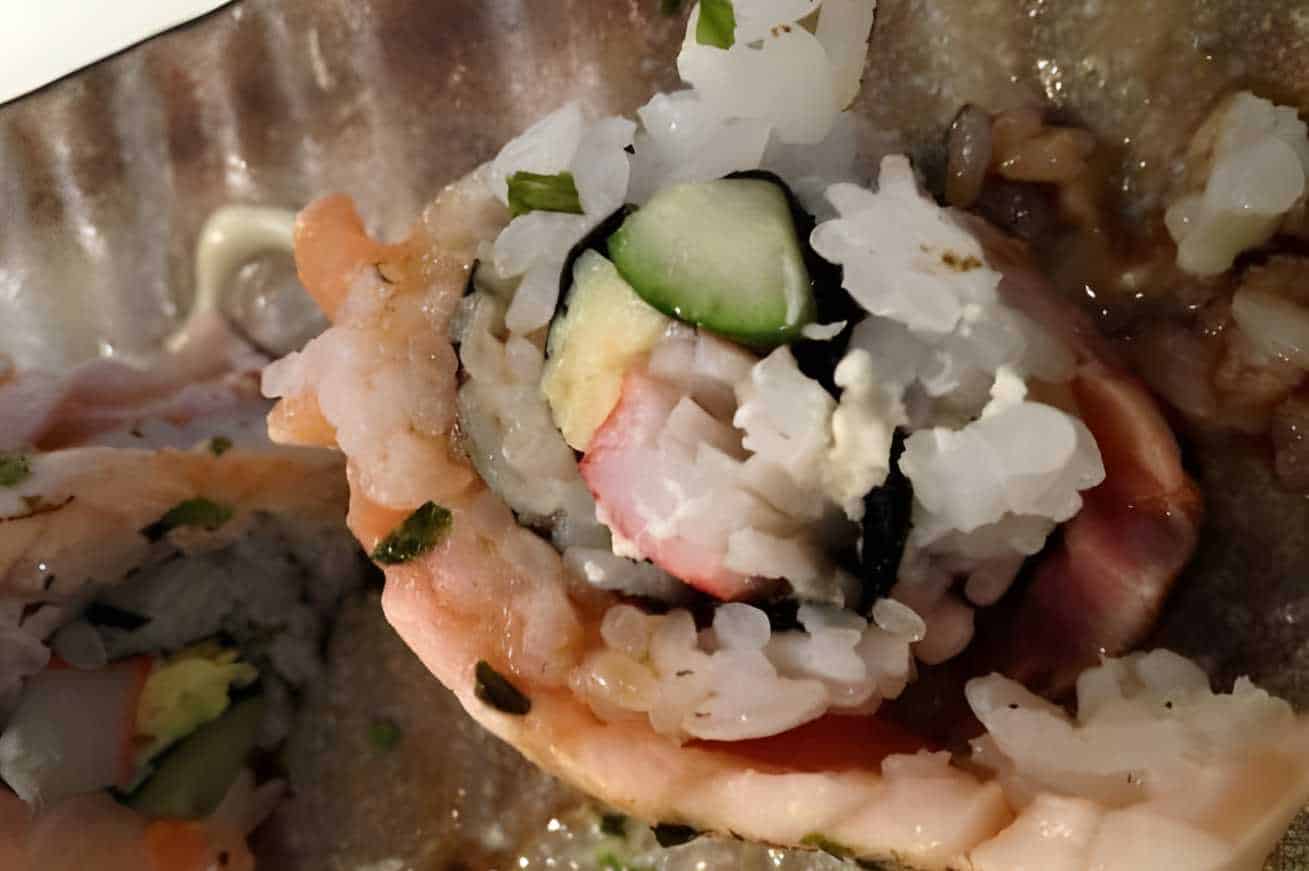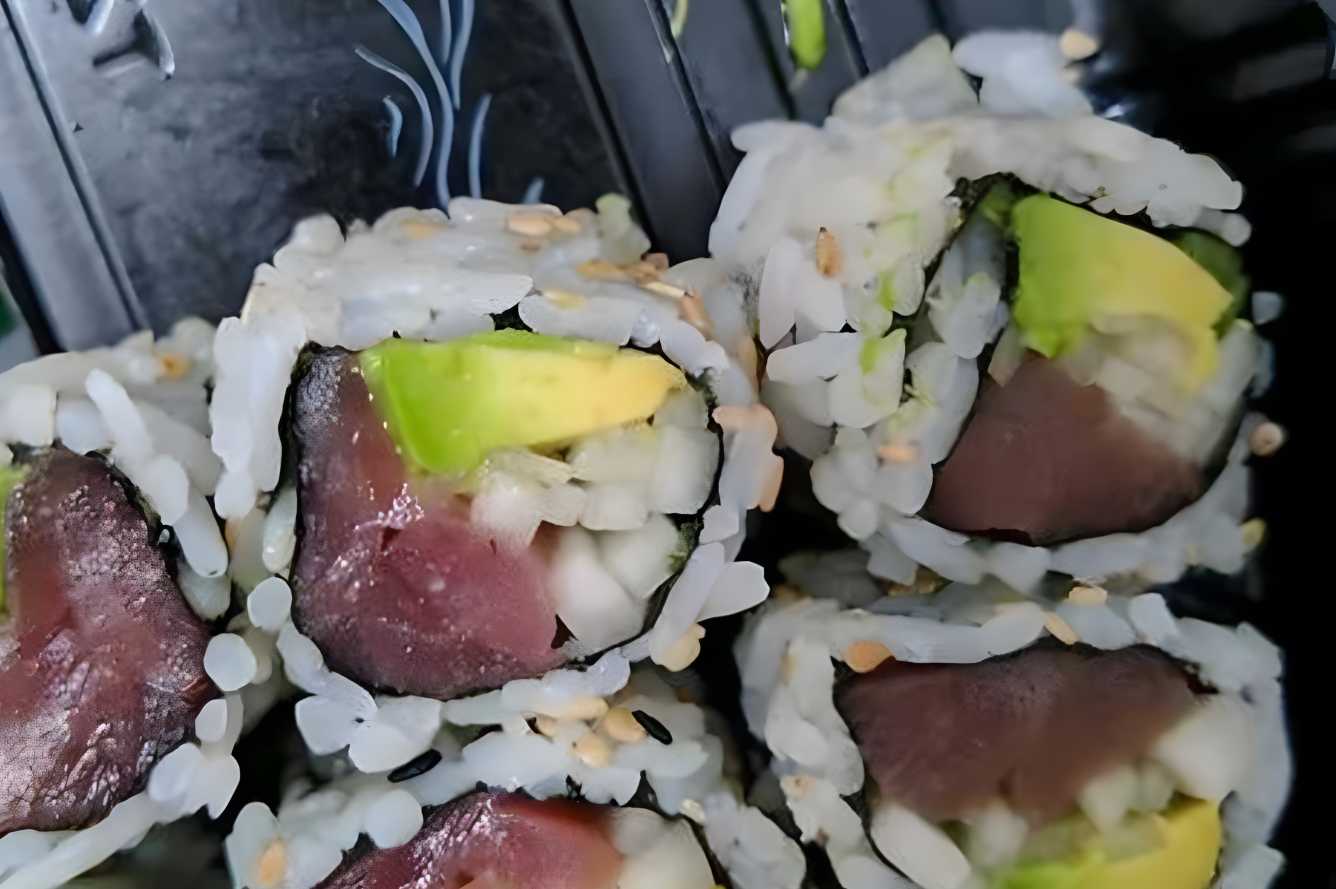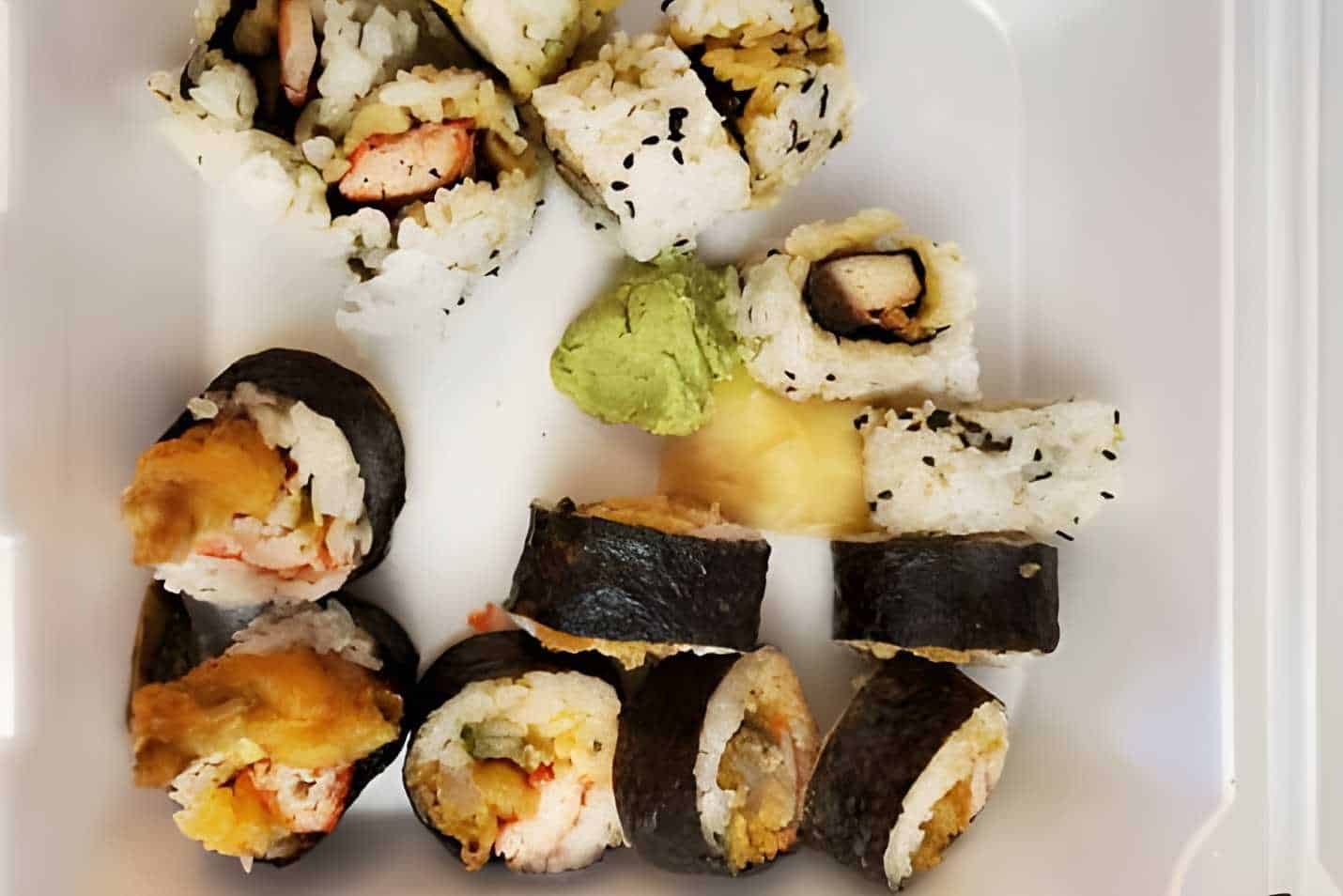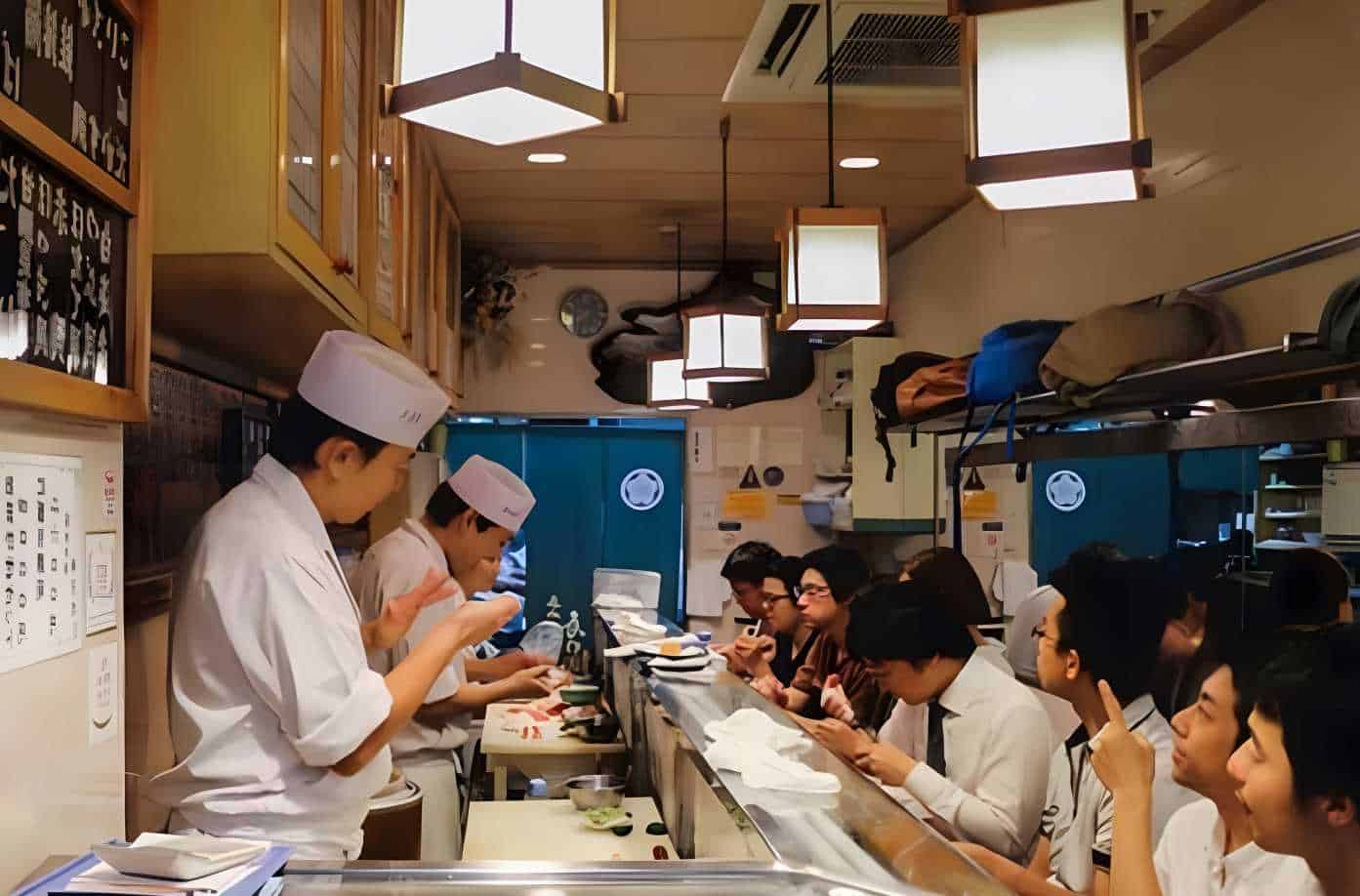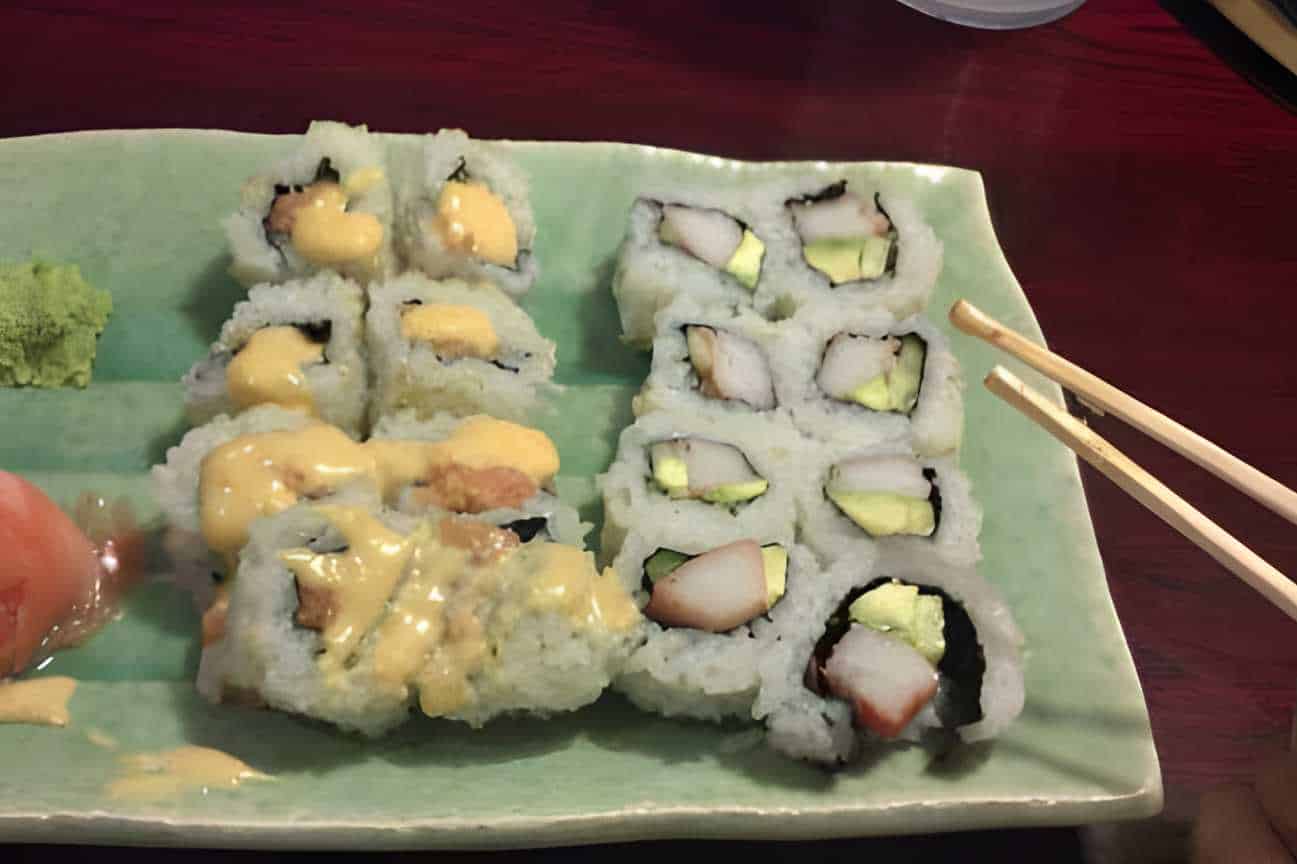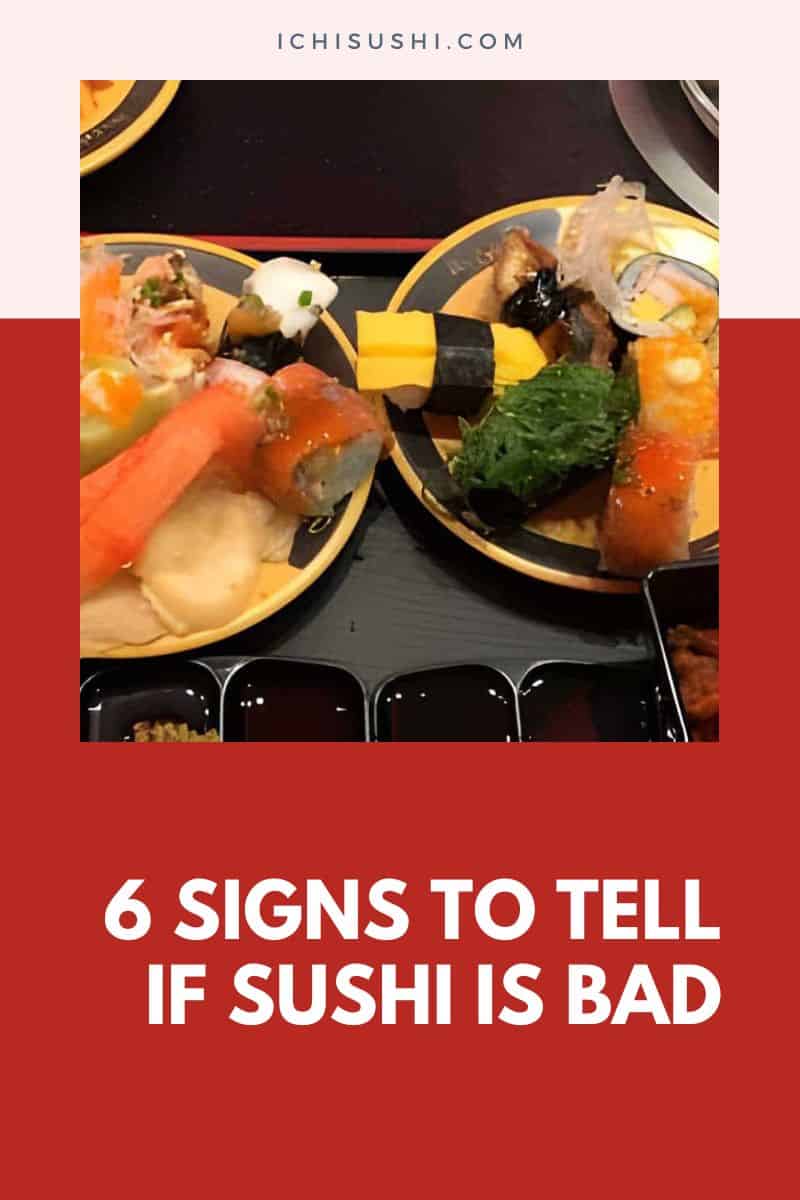Whether homemade or ordered from a restaurant, sushi never fails to make people happy and full.
But what if the sushi you bought or stored in the fridge has a weird smell or appearance?. Do you still eat it? This article will reveal how to tell if sushi is bad.
How Do You know if Sushi Has Gone Bad?
It doesn’t smell good
One of the tell-tale signs that your sushi has gone bad is the smell. While fish may be the main ingredient, the whole dish shouldn’t smell too fishy.
Even if the chef used flash-frozen fish instead of fresh ones, it shouldn’t smell funky as long as it’s high quality and handled adequately.
A sign that indicates that the sushi is not fresh is when you get a solid ammonia-like scent when served.
The rice is hard and crumbly
If the rice of unrefrigerated sushi is hard, do not consume it. Good quality sushi rice should be soft and spring back when squeezed. If it also arrives at your dining table crumbly, avoid eating it.
On the other hand, if you notice that the rice is slimy, mushy, or has a weird smell, it’s not safe to eat. Remember also that white rice should remain white. If it’s brown, then it’s time to discard the sushi.
The fish looks dull
If the fish has dark patches and discoloration, you need to send it back or throw it away. Fresh fish has a consistent and vibrant color and a translucent appearance. Dull-looking seafood means it’s not fresh anymore.
The fish is slimy and too soft
Another way of checking if the sushi is good to eat is touching the fish. If it feels slimy, then it’s likely not safe for consumption. If you have doubts about the fish, you can press it with your finger. If it leaves an indentation or marks, the fish is not fresh.
The Nori is Mushy
Ideally, the nori or seaweed wrapper should be crispy and easy to bite. If it’s mushy, then eating it is a no-no. Moist or slimy nori means the sushi sat on the counter for too long.
It tastes weird
Tuna feels clean and light when you bite into it while salmon melts in your mouth. If they feel gummy and have an unpleasant flavor, skip consuming that batch.
How to Spot a Bad Sushi Place
Check out these pointers on choosing great sushi restaurants for filling and safe meals.
1. Stay away from restaurants that serve everything
As a rule of thumb, if you’re not dining in a sushi restaurant, then don’t order sushi. If the place isn’t dedicated to making sushi, they’re not focused on serving the best quality. Sushi making is an intricate art, and sushi chefs take pride in their creations.
So, if the restaurant also serves pasta, pizza, or fried chicken, the sushi probably takes a back seat. Not having the attention and expertise may result in an unfavorable outcome.
2. Avoid restaurants that smell a lot like fish
If you found a sushi restaurant but were welcomed with an awful fishy odor, head out the door and find another place. Fish may be the main ingredient of sushi, but it shouldn’t smell so bad that it stinks up the place.
According to a world-famous Japanese chef, a reliable sushi place should smell like watermelon or cucumber. The area is dirty and poorly maintained if it smells other than fruity goodness.
3. Skip eat-all-you-can deals
While it is tempting to feast on unlimited sushi for a relatively low price, it may not be a great idea. Great-tasting and intricate sushi must come from high-quality ingredients. Logically, good fish is more expensive.
So, if an eat-all-you-can restaurant churns out tons of sushi, it may mean it’s cheap and not prepared with care. It would be best to shell out more money for a safe and enjoyable sushi dining experience.
4. Avoid unusual ingredients and method
Generally, sushi that follows the Japanese tradition of freshness and simplicity is the best. If a restaurant serves rolls filled with so many unusual ingredients, they may be trying to mask something.
Nontraditional components and methods show they’re trying too hard, which can be a red flag. It will help if you check the menu online before visiting the restaurant to ensure you’ll get a good one.
What are the risks of eating bad sushi?
Is Sushi Prone to Going Bad?
Traditionally, sushi is made with vinegared rice, raw fish, vegetables, and seaweed (nori) sheets. Its main ingredient, raw fish, is prone to contamination, primarily if not appropriately handled.
According to the FDA (Food and Drug Administration), raw fish can be a breeding ground for bacteria, viruses, or parasites.
Can Eating Bad Sushi Make People Sick?
The following are possible health conditions you can get if you consume sushi that’s not handled correctly.
Listeriosis
Listeria is a pathogenic bacteria found in both raw and smoked fish. It can cause a severe infection in the gut that may result in nausea, vomiting, and abdominal pain.
This disease can be hazardous to immunocompromised individuals, children, the elderly, and pregnant women.
Salmonella Food Poisoning
Aside from poultry and meat, people can also get Salmonella infection from improperly-prepared
raw fish. The symptoms include fever, stomach cramps, and diarrhea. The severity of the symptoms varies per person, but they usually begin six hours to six days after getting infected.
Those who have robust immune systems do not develop symptoms, while others experience them for many weeks,
Scombroid Food Poisoning
Scombroid poisoning is a result of not keeping fish cold enough in storage. When the seafood starts to decay, it creates excess histamine that can cause a severe allergic reaction or anaphylaxis.
Common symptoms include facial flushing, sweating, vomiting, dizziness, rashes, and a tingling or burning sensation in the mouth. People experience these signs within two minutes to several hours after eating poorly-stored fish.
Bacillus Cereus Infection
Raw fish isn’t always the culprit of food-borne illnesses. Sometimes, spoiled rice and vegetables found in sushi can cause Bacillus Cereus infection. If the rice has been sitting at room temperature for a long time, it can cause a vomiting infection.
Eating sushi may have some risks, but it doesn’t mean that you have to avoid eating it altogether. It would be best to watch for signs that the sushi is bad to avoid getting sick.
How to Prevent Having Bad Sushi at Home
If you’re planning to make sushi at home, please be aware of the following guidelines. These safety precautions can help prevent food poisoning due to improper handling.
- It would be best to use the freshest fish available in the market. Some vendors rate their fish as sushi-grade, but there isn’t an official standard so trust your senses in choosing. The fish must have a vibrant color and firm texture and be free from foul odors.
- Sushi restaurants follow a strict protocol of flash-freezing the fish for 15 hours to ensure no parasites have survived. Even if you don’t have the same equipment, you can still make sushi at home by following FDA recommendations.
- Choose farmed salmon, tuna, or other whole marine fish for a safer meal. Most freshwater fish are prone to parasites, so it’s wise to avoid them. Sushi chefs are trained to watch out for parasites in fish, so it’s best to leave them to the experts.
- Ensure that your tools and working area are exceptionally clean. No matter how fresh your ingredients are, they might still get contaminated if your tools are dirty.
- After the fish has been thawed inside the refrigerator, you only have 24 hours to consume it. However, if the fish has been out at room temperature, you only have a four-hour window to prepare and eat it.
- You may store leftover sushi inside an air-tight container. Place the dish inside the refrigerator and consume it within two days. However, if the sushi is served outdoors, it is best to consume them in an hour.
About parasites
Option 1
Step 1: Freeze fish at -4 degrees Fahrenheit for a week.
Step 2: Freeze at -31 degrees Fahrenheit until the fish becomes solid.
Step 3: Store at the same temperature for 15 hours before using for sushi.
Option 2
Step 1: Freeze at -31 degrees Fahrenheit until the fish becomes solid.
Step 2: Store for one day at -4 degrees Fahrenheit before preparing.
Option 3
Sear the fish until it reaches an internal temperature of 145 degrees Fahrenheit.
Conclusion
Eating bad sushi can cause food poisoning, but you can prevent it by knowing its smell, texture, and appearance.
Experts advise proper handling and storage to avoid food-borne illnesses when preparing food at home. Knowing how to tell if sushi is bad can help you enjoy a safe and delicious meal.

Hiroshi Nakamura, a Tokyo-born sushi chef turned US-based writer and critic, is the voice behind ichisushi.com, blending traditional sushi wisdom with modern insights.

